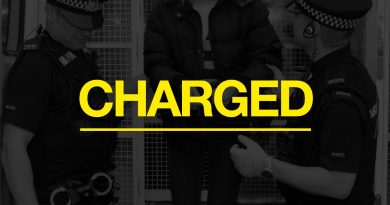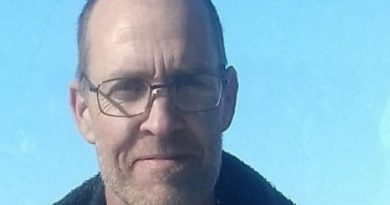Gosport exhibition to reveal top-secret D-Day role
GOSPORT’S secret role in D-Day will be revealed in greater detail than ever before with a special exhibition this weekend, which will commemorate the 80th anniversary of the biggest amphibious invasion in history.
The free exhibition will take place at the former Royal Navy training establishment of St Vincent College and tells the stories of the top secret Combined Operations Pilotage Parties (COPP); as well as their clandestine missions in the six months prior to Operation Neptune and Overlord on D-Day, 1944.
It is set to be held within the accessible / signposted Jervis Gallery on June 1 (Saturday) and June 2 (Sunday), whilst free parking is available on site. The exhibition is open from 10:30am-5pm on Saturday and then again between 11am-5pm on Sunday; allowing everyone the opportunity to attend.
This exhibition will feature the work of the three COPP teams directly involved in the invasion on June 6, 80 years ago; including many previously unseen photographs of the men in training and shortly before their departure for Northern France.
Brigadier Robbie Scott-Bowden will give an illustrated talk on both days about his father; who was the first COPPist to set foot in Normandy when carrying out Operation KJH on January 31st, 1943. The talk will feature footage of Major Logan Scott-Bowden retracing his steps on Omaha and Gold Beaches, which was recorded to mark the 50th anniversary of D-Day in 1994.
Also featured in the exhibition are decorated war hero Leading Seaman John Bowden (who was brought up in a Portsmouth children’s home) and Bill Tebb, who took part in the human torpedo attack on the Tirpitz before joining COPP Both men completed their basic training with the Navy at St Vincent in the late 1930s.
One COPP team, including Bowden, went ashore on June 7 having accomplished their most important D-Day task; where they were photographed in a French town as well as on the trip back to England.
Two midget submarines slipped out of Gosport’s HMS Dolphin at 9.30pm on June 2, 1944 carrying four commandos from COPP 1 and 9. Their job was to hoist two tall beacon lights on the edge of the Sword and Juno sectors, while operating radar and sonar signalling devices.
The thousands of landing craft and assault ships bearing down on the Normandy coast could pick up the signals and see the lights; which ensured that the troops and tanks in the first wave of Operation Overlord landed on the right beaches.
The tank crews were accompanied by members of COPP 6, who had spent the previous six months training in landing craft at HMS Tormentor, on the River Hamble at Warsash.
COPP were based at Hayling Island Sailing Club from 1943 until the end of World War Two; with their roles absorbed into the Special Forces role of the SBS after the war.
Although their story was largely forgotten about after the war, historian now acknowledged they helped ensure D-Day achieved its key objectives.
Their relentless training and unique skills enabled as many troops and vehicles as possible got ashore safely thanks to their reconnaissance of key beaches selected for the invasion 80 years ago.
The exhibition has been put together by former Portsmouth newspaper editor Andrew Griffin who grew up in Gosport with his father Brian; a submariner based at HMS Dolphin in the 1960s and 1970s.
Andrew, who is one of the trustees who erected a memorial to COPP on Hayling seafront twelve years years ago, hopes the exhibition will shine a light on some of Gosport’s hidden heroics in the Second World War. He said: “The story of Gosport’s role as an embarkation point for many of the troops and tanks that went to France 80 years ago, has rightly been told over and over on each successive anniversary.”
“But the role of COPP – particularly Operation Gambit – has only surfaced so to speak in the last 15 years. Now after a lot of painstaking work by people like COPP Survey’s Rob Crane, and our band of volunteers, the official accounts have been found in the National Archives at Kew, and the Imperial War Museum.”
He continued: “Surprisingly a lot of photographs were taken, given the most top secret status COPP enjoyed during the war. They were a force of around 200 men who ensured the success of every major amphibious assault from North Africa in 1942 – to driving the Japanese out of Burma, Thailand, and Singapore, as well as their vital role in D-Day.”
“The fact that we now have the links between at least two COPP members directly involved in D-Day, who did their basic training at St Vincent, it seemed a natural thing to try and get an exhibition staged there. I am indebted to St Vincent principal Andy Grant and his team for allowing us to use the Jervis Gallery – just hours before it is used for vital college exams.”
“I hope people can find 30-40 minutes to learn more about the town’s incredible role in the momentous day in the Second World War, certainly when it came to the conflict in Europe. As a history graduate, I hope anyone studying the subject should find it helps bring one of the biggest stories of the war to life, with accounts from the people who were there.”
“Operation Gambit, was literally that, a potential sacrifice – as it is in a game of chess – to station two small submarines, just a half a mile from the French coast, which could act as beacons for the invasion fleet. The exhibition also tells how D-Day was postponed for 24 hours and how the X-craft crew found out that key message via the BBC.”
Andrew concluded: “You could only really spend around 10 or 11 hours at a time submerged before oxygen levels became critical. Surfacing was extremely risky, even at night, so the delay almost scuppered their entire mission. Ironically, it was the Luftwaffe who came to their aid.”
“How D-Day would have turned out if they had been forced to scuttle the sub and make for shore before the invasion fleet arrived – risking alerting the Germans to their presence – is anyone’s guess. That is how important Gosport’s role in D-Day really was, and deserves full recognition – the COPP teams spent months based in HMS Dolphin planning for D-Day,”
PICTURED: Members of COPP 6 on their return journey to England after their daring D-Day mission in June 1944.




